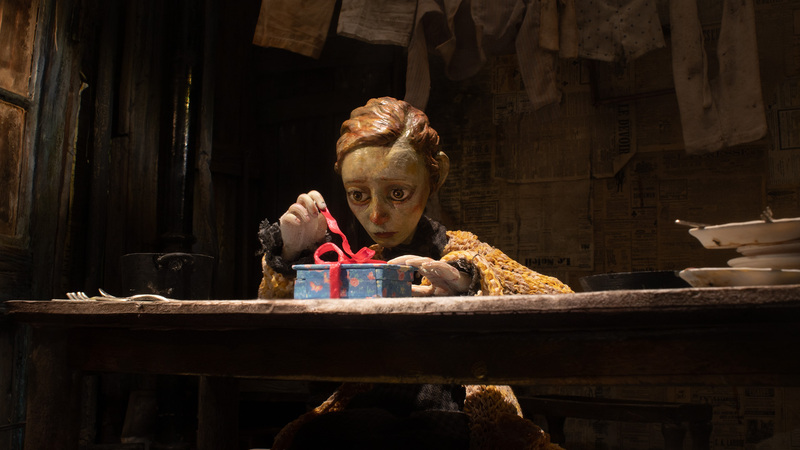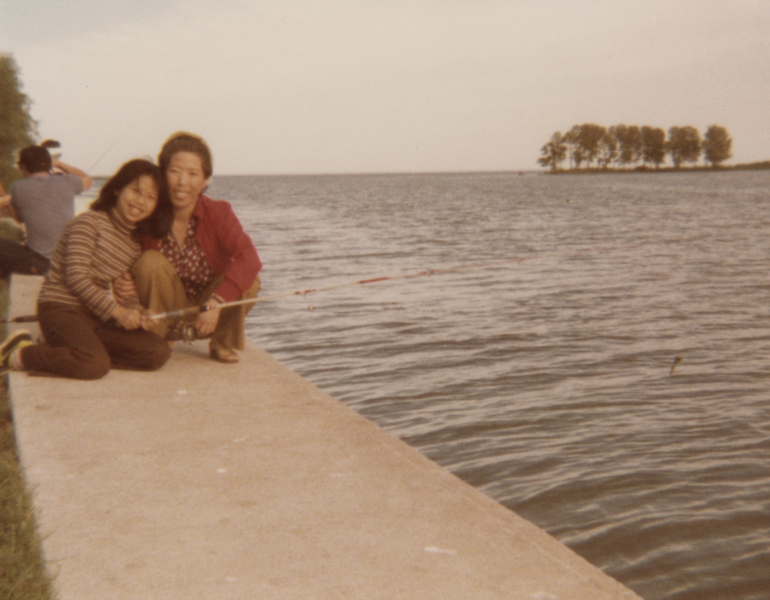
Love’s Fragility Examined Through a Fairytale Lens
MOVIE REVIEW
The Girl Who Cried Pearls
–
Genre: Drama, Fantasy, Animation
Year Released: 2025
Runtime: 17m
Director(s): Chris Lavis, Maciek Szczerbowski
Writer(s): Chris Lavis, Maciek Szczerbowski, Isabelle Mandalian
Cast: Colm Feore, Gabrielle Dallaire, James Hyndman
Where to Watch: shown at the 2025 Toronto International Film Festival
RAVING REVIEW: Some short films lean on whimsy, but what makes THE GIRL WHO CRIED PEARLS compelling is how it threads the timeless qualities of a fable with the artistry of stop-motion animation. In just under twenty minutes, Chris Lavis and Maciek Szczerbowski transform grief, devotion, and temptation into a cautionary tale that feels both rooted in centuries-old storytelling and strikingly relevant today.
The premise is deceptively simple: a young girl burdened by anguish sheds pearls with every tear. A boy devoted to her becomes the custodian of this strange gift, but as the pearls accumulate, love becomes tangled with greed. The film doesn’t need to spell out its message—greed distorts even the purest intentions—but the execution elevates the narrative into something unforgettable. It’s a story told with the weight of folklore, carried on the shoulders of a visual poem.
The animation is extraordinary. Each puppet, each miniature set piece, carries the marks of human hands. There’s no attempt to smooth over the textures that make stop-motion distinct; instead, those imperfections become part of the film’s soul. Lavis and Szczerbowski show why they are masters of the art. They blend physical puppetry with subtle digital effects and live-action elements, creating visuals that feel tactile and alive. It’s the kind of animation that invites you to lean in closer, to study the detail in every frame.
The narration, voiced by Colm Feore, frames the story as a memory told from the perspective of an “old man.” Some viewers may find the voiceover overly intrusive, occasionally explaining what the visuals could convey on their own. Yet it also provides a sense of tradition, as though the audience is being let in on a family story passed down across generations. The narration’s reflective quality complements the fable-like tone, even if it occasionally risks tipping toward excess.
The payoff is undeniable. The film builds patiently, leading to a conclusion that lands with quiet devastation. Without revealing specifics, the ending reframes what we’ve been watching, transforming the story from a cautionary parable into a meditation on memory, regret, and the costs of desire. It’s in these final minutes that the narration, the animation, and the music converge into something genuinely haunting.
Patrick Watson’s score deserves special mention. His music weaves melancholy and beauty together, underlining the story without overwhelming it. The score lingers in the background like an echo of the characters’ emotions, swelling only when necessary. In a short where silence matters as much as sound, Watson’s restraint is part of the film’s power. It’s easy to imagine the music existing outside the movie as a stand-alone piece of art, which speaks to its strength.
Thematically, the film thrives on dualities. Love and greed, devotion and exploitation, innocence and corruption—all are entwined within its short runtime. It recalls the darker edges of Hans Christian Andersen or the Brothers Grimm, where magic is never without cost and morality tales don’t always end the way you want. The universality of its message is part of what makes the film resonate. Whether viewed as an allegory for exploitation, a meditation on the fragility of love, or simply a modern fairy tale, it holds meaning beyond its runtime.
For all its artistry, THE GIRL WHO CRIED PEARLS works because it leaves space for the audience to reflect. It doesn’t end with a tidy resolution or a moral spelled out in bold letters. Instead, it lingers in the mind like a story told by firelight, one that feels older than it is. That’s the mark of a fable done right: it doesn’t just entertain, it stays with you, asking to be retold.
Is it perfect? No. Some will find the narration too heavy, and others may be distracted by the design. But those critiques don’t undercut the film’s achievements. For a seventeen-minute short, it manages to offer more artistry, emotion, and reflection than many feature-length projects. It reminds us why short films matter: they condense human truths into concentrated form, stripping away excess until only what’s essential remains.
Ultimately, this is a film about how love can be undone by desire, how devotion can erode under the weight of temptation, and how memory can both transform and be transformed by both. It’s as timeless as it is timely —a story of greed and loss, dressed in pearls. And though it’s brief, it leaves an impression that feels much larger than its runtime.
Please visit https://linktr.ee/overlyhonestr for more reviews.
You can follow me on Letterboxd, Instagram, Twitter, and YouTube. My social media accounts can also be found on most platforms by searching for 'Overly Honest Reviews'.
I’m always happy to hear from my readers; please don't hesitate to say hello or send me any questions about movies.
[photo courtesy of NATIONAL FILM BOARD OF CANADA (NFB)]
DISCLAIMER:
At Overly Honest Movie Reviews, we value honesty and transparency. Occasionally, we receive complimentary items for review, including DVDs, Blu-rays, CDs, Vinyl Records, Books, and more. We assure you that these arrangements do not influence our reviews, as we are committed to providing unbiased and sincere evaluations. We aim to help you make informed entertainment choices regardless of our relationship with distributors or producers.
Amazon Affiliate Links:
Additionally, this site contains Amazon affiliate links. If you purchase through these links, we may receive a commission. This affiliate arrangement does not affect our commitment to honest reviews and helps support our site. We appreciate your trust and support in navigating these links.



I enjoyed your breakdown thoroughly. Bless your method in writing it. Much love from JBL!